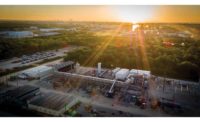A third project, expected to break ground this year, is the $1.65-billion FutureGen project at Unit 4 at Ameren's powerplant in Meredosia, Ill. Funded largely through a $1-billion DOE grant, the project will use oxycombustion, which burns coal in purified oxygen to create a concentrated CO2 stream. The CO2 will be compressed and piped for underground storage at a nearby saline aquifer. The project is projected to come on line some time in 2017.
Penny-Wise Utilities
Despite the development of a few utility-scale CCS plants in North America, power companies are hesitant to launch new projects, although there are a handful in development in the U.S., Europe and China, says the Global Carbon Capture and Storage Institute.
"The New Source Performance Standards pretty much prevent the construction of any new coal plants," AEP's McHenry says. "With the proposed standards for new plants, you couldn't build one without CCS, and that technology isn't proven, so you wouldn't take that risk," she says. Additionally, issues of liability for who owns the CO2 after it is sequestered have yet to be worked out, she says.
Brian Toth, environmental assessment manager for Southern Co., says, "We would have liked [EPA] to have shown some actual operating data of recently constructed plants and a set a limit that is consistent with those kinds of projects." The list would include the modern, highly efficient supercritical pulverized- coal plants "but would not have included CCS," he says. Toth notes that CCS may be workable for some plants, such as Kemper County's, but requiring CCS on all new plants is pushing utilities to use more expensive, first-generation technology on all new plants at the expense of developing second-gen technology.
A key complaint among utilities is that CCS is not economical in today's market. The American Coalition for Clean Coal Electricity estimates that installing first-generation CCS technology on a 600-MW coal plant could add as much as $1 billion in capital costs.
A typical commercial fossil-fuel powerplant creates a large mass of CO2 that needs to be captured and disposed. With postcombustion CCS, "there's a significant amount of energy that has to be used to run the process and compress the CO2 into a liquid for transport to either a sequestration site or enhanced oil recovery site," Broeils says.
Pamela Tomski, a senior adviser for the Americas at the Global CCS Institute, says, "In current market conditions, [CCS] just can't compete with other options, particularly natural gas and combined-cycle plants."
Most of the plants that have either been built or are in development have received partial subsidies from the federal government. For example, Kemper received $270 million under DOE's Clean Coal Initiative. Subsidies help, but incentives to develop CCS policy changes at the federal and state levels would do more, Tomski observes. One potential incentive would recognize CCS as an important component of a low-carbon portfolio and include the technology in programs such as clean-energy portfolio standards or tax credits designed to drive clean-energy deployment, she says. Additionally, more funds should be set aside for R&D efforts, she believes.
The EPA regulations "are one component that can help drive commercial deployment, and they need to be coordinated with policy incentives and policy actions. … If they are issued in silos, then we don't get anywhere," she says.
NRDC's Peridas adds, "The reason we have not seen more of [CCS] is not because there is no one out there willing to stick their neck out. The reason? Laws and regulations governing putting CO2 into the atmosphere haven't made this a necessity or even an attractive proposition." He says EPA's NSPS proposal will help "level the playing field" and ensure that no new plants are built with uncontrolled CO2 emissions.








Post a comment to this article
Report Abusive Comment